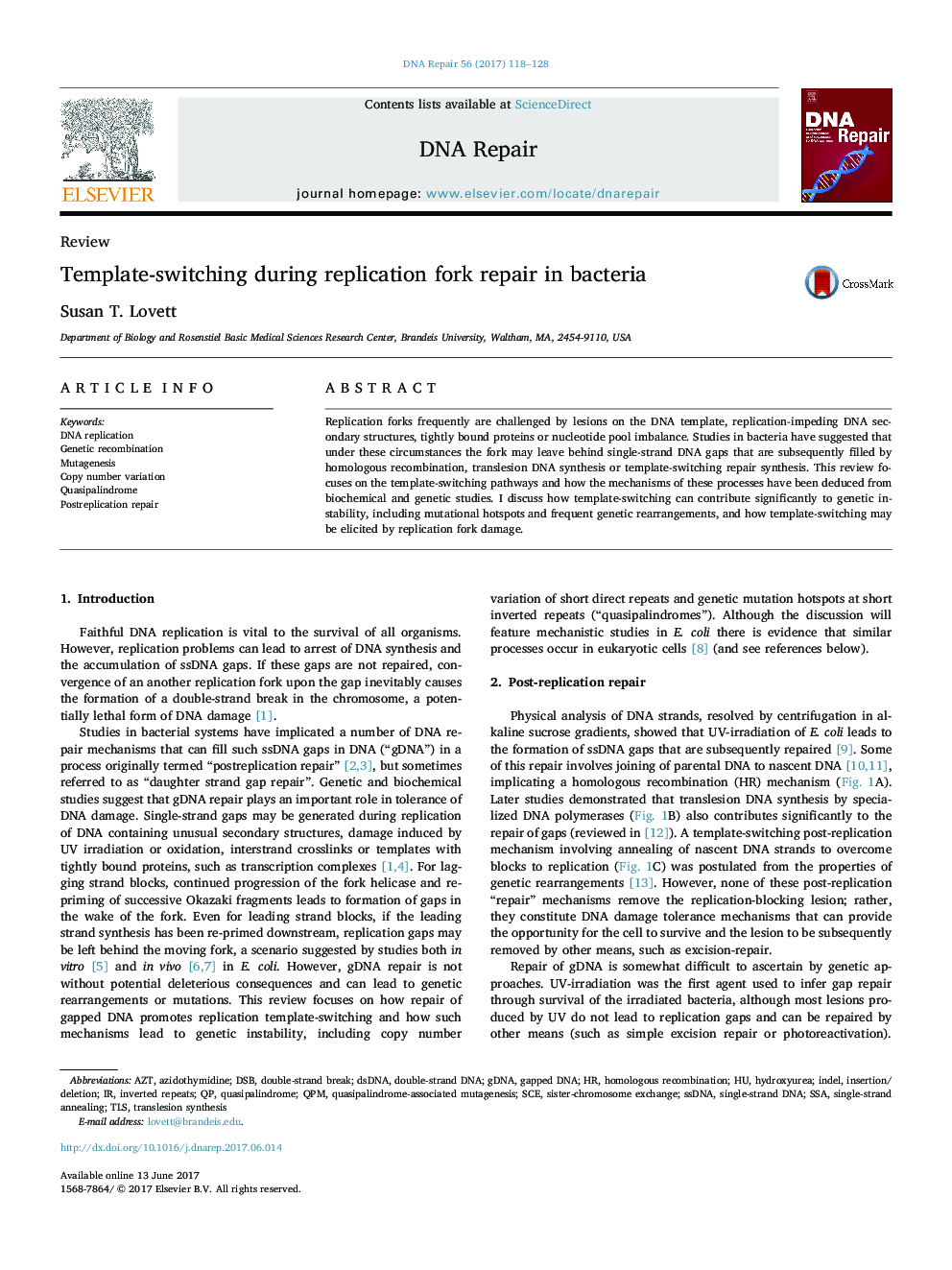| Article ID | Journal | Published Year | Pages | File Type |
|---|---|---|---|---|
| 5510983 | DNA Repair | 2017 | 11 Pages |
Replication forks frequently are challenged by lesions on the DNA template, replication-impeding DNA secondary structures, tightly bound proteins or nucleotide pool imbalance. Studies in bacteria have suggested that under these circumstances the fork may leave behind single-strand DNA gaps that are subsequently filled by homologous recombination, translesion DNA synthesis or template-switching repair synthesis. This review focuses on the template-switching pathways and how the mechanisms of these processes have been deduced from biochemical and genetic studies. I discuss how template-switching can contribute significantly to genetic instability, including mutational hotspots and frequent genetic rearrangements, and how template-switching may be elicited by replication fork damage.
